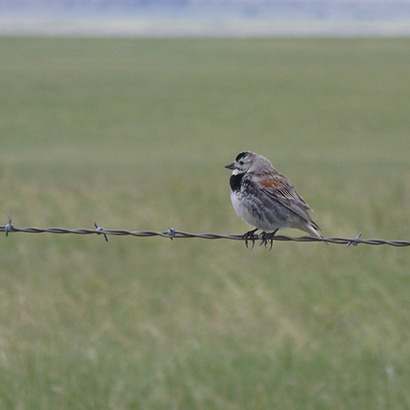Research
As ambassadors and bellwethers of the natural world, birds are intrinsically linked to the culture and economy of Montana, the United States and the world. The Avian Science Center’s underlying foundation is ecological research of bird populations. We focus on research projects that inform an understanding of the state of the environment including the impacts of human activities on our natural resources.
-

Adaptive Management Monitoring
We use avian monitoring to provide information on populations, communities, and ecosystems. Our monitoring approach follows the adaptive management process that simultaneously 1) meets short-term management objectives and 2) advances our knowledge about birds to reduce uncertainty in achieving future management objectives. Thus, our monitoring programs have management objectives that adapt as we learn more about birds and their response to the management actions or changes in the environment. A few of our current research projects featuring monitoring programs include:
-
Effects of livestock grazing on greater sage-grouse and songbirds in sagebrush habitat of central Montana
-
Habitat use, movement ecology, and demography of bald and golden eagles in Alaska
-
Effects of outdoor domestic cats on urban avian species in Missoula, Montana
-
-

Landscape-scale Conservation
Birds reside over vast areas and are bioindicators of the landscape and ecosystem. Often we use a landscape-level approach, working with numerous stakeholders with a vested cultural, social, and economic interest in the landscape. Many of our current research projects involve working in tandem with private agricultural producers like farmers and ranchers; state, federal, and tribal agencies; non-profit organizations; and other conversation practitioners. In close collaboration with the Intermountain West Joint Venture, we are currently focusing on wetland characteristics of landscapes across the western US. The overarching goal is to connect bird responses to historic and current spatial and temporal wetland patterns. A few recent projects include:
-
Developing wetland conservation for white-faced ibis across the Intermountain West
-
Synchronizing conservation to seasonal wetland hydrology and waterbird migration in semi-arid landscapes
-
Boom, bust: linking patterns of rural land-use change and wetland condition to trends in greater sandhill crane demographics
-
-

Advancing Avian Methods
There are many data collection and analytical methods available to understand numerous aspects of bird populations, such as nest success, survival rates, and the number of birds during a specific time (i.e., abundance). Data collection methods and analyses evolve as we learn more about the uncertainties in our abilities to locate nests or count and follow birds. We develop, evaluate, and refine field and analytical methods to improve our certainty in informing avian conservation. A few of our more recent projects include:
-
Determining species-specific false-positive rates using visual and auditory cues
-
Testing the assumption of a closed population in statistical analyses using two avian communities and potential consequences for management and conservation practices
-
Estimating nest density and nest success from one data source
-
Evaluating AI-based counts in relation to human observers
-
